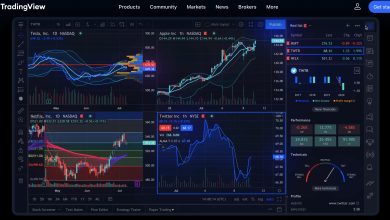Long-Term vs. Short-Term Investing in Cryptocurrencies

- Understanding the Differences Between Long-Term and Short-Term Investing in Cryptocurrencies
- Pros and Cons of Long-Term Investing in Cryptocurrencies
- Strategies for Successful Long-Term Investing in Cryptocurrencies
- Short-Term Trading vs. Long-Term Holding: Which is Better for Cryptocurrency Investors?
- Mitigating Risks in Short-Term Cryptocurrency Investments
- The Impact of Market Volatility on Long-Term Cryptocurrency Investments
Understanding the Differences Between Long-Term and Short-Term Investing in Cryptocurrencies
When it comes to investing in cryptocurrencies, it is essential to understand the differences between long-term and short-term strategies. Long-term investing involves holding onto assets for an extended period, typically years, with the expectation that their value will increase over time. On the other hand, short-term investing focuses on capitalizing on price fluctuations in the short run, often within days or weeks.
One key difference between long-term and short-term investing in cryptocurrencies is the level of risk involved. Long-term investors are more likely to weather market volatility and fluctuations, as they believe in the potential of the asset over time. In contrast, short-term investors are more susceptible to market sentiment and price movements, which can lead to higher levels of risk and uncertainty.
Another difference is the mindset and approach of investors. Long-term investors tend to have a more patient and strategic outlook, focusing on the fundamentals of the cryptocurrency and its long-term potential. Short-term investors, on the other hand, are often driven by technical analysis and market trends, looking to capitalize on short-term price movements for quick profits.
It is essential for investors to consider their financial goals, risk tolerance, and investment horizon when deciding between long-term and short-term strategies. While both approaches have their advantages and disadvantages, it is crucial to align your investment strategy with your overall financial objectives to maximize returns and minimize risks in the volatile cryptocurrency market.
Pros and Cons of Long-Term Investing in Cryptocurrencies
When it comes to long-term investing in cryptocurrencies, there are several pros and cons to consider. One of the main advantages of long-term investing is the potential for significant growth over time. By holding onto your crypto assets for an extended period, you may be able to capitalize on market trends and increase your investment value.
Another benefit of long-term investing in cryptocurrencies is the opportunity to diversify your investment portfolio. By holding onto a variety of crypto assets over time, you can spread your risk and potentially minimize losses in the market.
However, there are also drawbacks to long-term investing in cryptocurrencies. One concern is the volatility of the crypto market. Prices can fluctuate rapidly, which may lead to significant losses if you are not careful.
Another challenge of long-term investing is the lack of regulation in the crypto space. Without government oversight, there is a higher risk of fraud and scams, which could impact your investment strategy.
Strategies for Successful Long-Term Investing in Cryptocurrencies
When it comes to long-term investing in cryptocurrencies, there are several strategies that can help investors achieve success over time. One key strategy is to diversify your portfolio by investing in a variety of different cryptocurrencies. This can help spread out risk and protect against volatility in any one coin.
Another important strategy is to do your research before investing in any cryptocurrency. Make sure you understand the technology behind the coin, the team working on it, and the market demand for it. This can help you make more informed decisions and avoid investing in projects that may not be sustainable in the long run.
It’s also crucial to have a long-term mindset when investing in cryptocurrencies. Volatility is common in this market, so it’s important to be prepared for fluctuations in the value of your investments. Patience is key when it comes to long-term investing, as it can take time for cryptocurrencies to reach their full potential.
Lastly, consider using dollar-cost averaging as a strategy for long-term investing in cryptocurrencies. This involves investing a fixed amount of money at regular intervals, regardless of the price of the coin. This can help reduce the impact of market volatility on your investments over time.
Short-Term Trading vs. Long-Term Holding: Which is Better for Cryptocurrency Investors?
When it comes to investing in cryptocurrencies, investors often debate between short-term trading and long-term holding. Both strategies have their own advantages and disadvantages, and the best approach depends on individual goals and risk tolerance.
Short-term trading involves buying and selling cryptocurrencies within a short period of time, usually days or weeks. This strategy requires active monitoring of the market and quick decision-making to capitalize on price fluctuations. While short-term trading can be profitable, it also carries a higher level of risk due to the volatility of the cryptocurrency market.
On the other hand, long-term holding involves buying cryptocurrencies with the intention of holding onto them for an extended period, typically months or years. This strategy is less stressful than short-term trading as it requires less frequent monitoring of the market. Long-term holding is often favored by investors who believe in the long-term potential of a particular cryptocurrency.
For cryptocurrency investors, the decision between short-term trading and long-term holding ultimately comes down to their investment goals and risk tolerance. Short-term trading can be more profitable in the short term, but it also carries higher risk. Long-term holding, on the other hand, may be less stressful and more aligned with a buy-and-hold investment strategy.
Mitigating Risks in Short-Term Cryptocurrency Investments
Investing in cryptocurrencies can be a lucrative venture, but it also comes with its fair share of risks, especially when it comes to short-term investments. It is essential to be aware of these risks and take steps to mitigate them to protect your investment. Here are some strategies to help you navigate the volatile world of short-term cryptocurrency investments:
- **Diversification**: One way to mitigate risks in short-term cryptocurrency investments is to diversify your portfolio. By spreading your investment across different cryptocurrencies, you can reduce the impact of any single asset’s price fluctuations on your overall portfolio.
- **Risk Management**: Implementing risk management strategies, such as setting stop-loss orders or using hedging techniques, can help protect your investment from sudden market downturns. It is crucial to have a clear plan in place to manage risks effectively.
- **Stay Informed**: Keeping up to date with the latest news and developments in the cryptocurrency market is essential for making informed investment decisions. By staying informed, you can anticipate market trends and adjust your investment strategy accordingly.
- **Avoid Emotional Decisions**: Emotions can cloud judgment and lead to impulsive investment decisions. It is essential to remain rational and stick to your investment plan, even when the market is experiencing volatility.
- **Utilize Technical Analysis**: Technical analysis can help you identify patterns and trends in cryptocurrency prices, allowing you to make more informed investment decisions. By using technical analysis tools, you can better predict market movements and adjust your strategy accordingly.
By implementing these strategies, you can mitigate risks in short-term cryptocurrency investments and increase your chances of success in the volatile cryptocurrency market. Remember to always do your research and consult with financial experts before making any investment decisions.
The Impact of Market Volatility on Long-Term Cryptocurrency Investments
Market volatility can have a significant impact on long-term cryptocurrency investments. While short-term fluctuations in prices may not be a cause for concern for long-term investors, extreme volatility can lead to uncertainty and anxiety. It is essential for investors to understand that the cryptocurrency market is highly volatile and can experience rapid price swings in a short period.
Long-term investors need to have a strong risk management strategy in place to navigate through market volatility. Diversification of the investment portfolio can help mitigate the impact of market fluctuations on long-term cryptocurrency investments. By spreading investments across different cryptocurrencies, investors can reduce the risk of significant losses due to the volatility of a single asset.
Moreover, long-term investors should focus on the fundamentals of the cryptocurrencies they are investing in rather than short-term price movements. By conducting thorough research and analysis of the technology, team, and community behind a cryptocurrency, investors can make informed decisions that align with their long-term investment goals.





